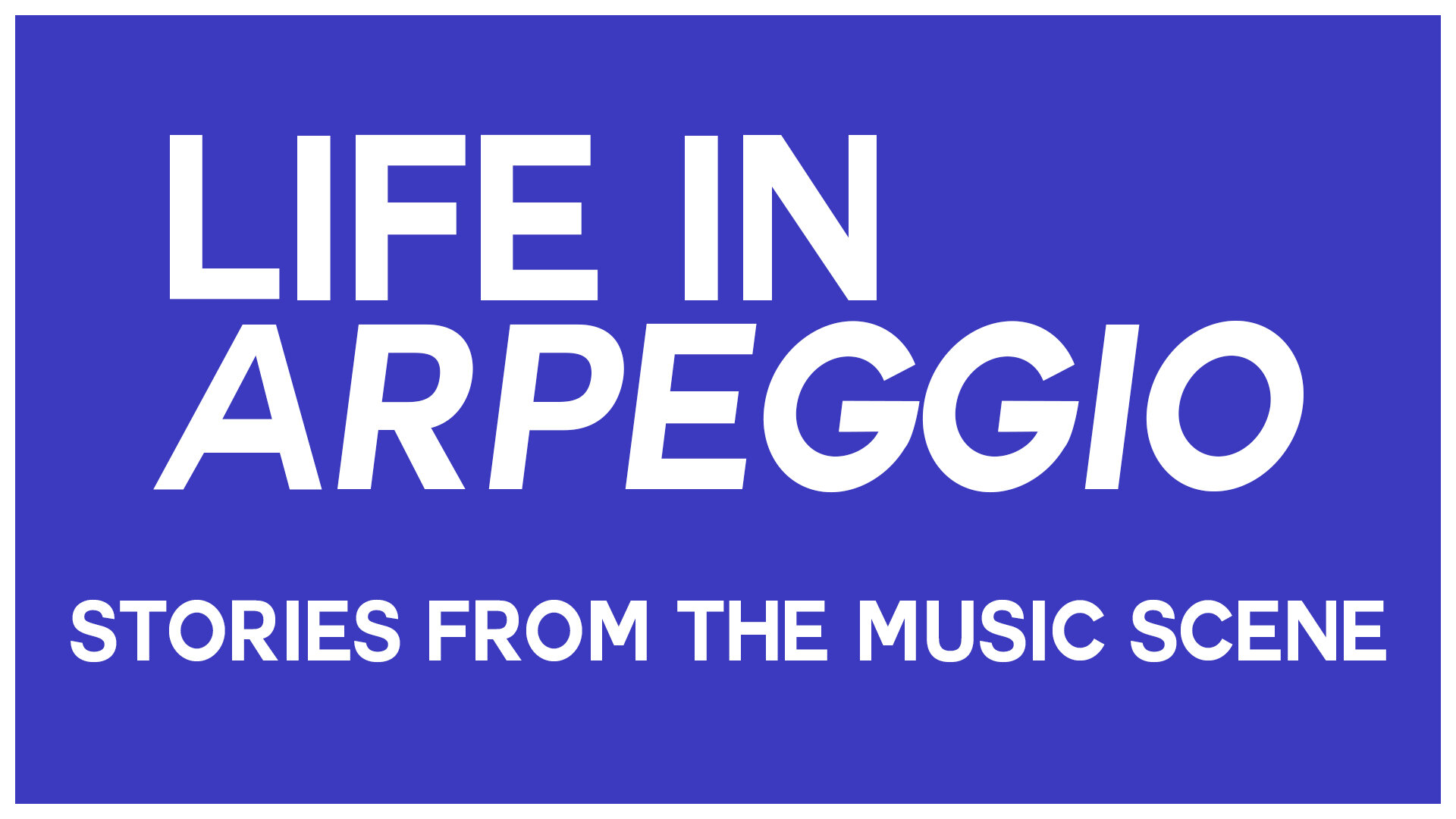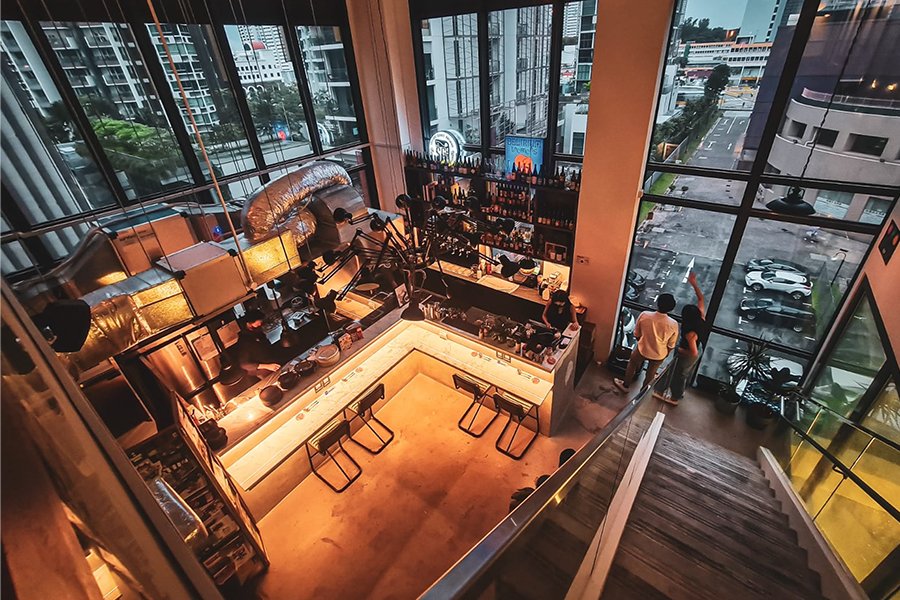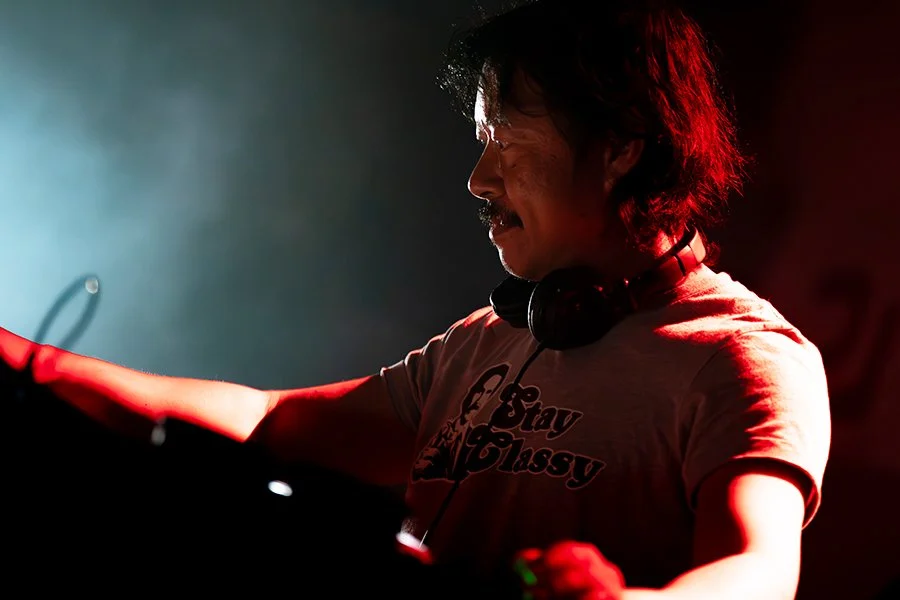The Epiphany Of Electronica: Brielle Kaga Ascends The Singer-Songwriter Ladder
Newcomer to the indie-pop circuit, Brielle Kaga, has been infatuated with electronic production (Credit: Adam Yee)
Patience is a virtue that’s hard to cling onto, especially along the bump-laden path of an independent musician in Singapore. For the 26-year-old Brielle Kaga, it took her nearly half her life before she found the confidence to flesh out “Move On” in the studio. It was a composition she’d penned in her impressionable teenhood, a formative period when she was already being pulled by the allure of songwriting as a then-fledgling guitarist.
With the ambition of being a musician locked in her crosshairs, Brielle would dedicate herself to expanding her ambit as a creator and listener – the slog of YouTube tutorials, amateur school performances, electronic production courses and familiarising herself with the growing pool of Singaporean musicians in the 2010s. And then, a key epiphany struck her after she did her exchange programme in the US.
Returning with a heightened adoration for electronic music, Brielle made the decision to impart its limitless palette to her original material. The culmination of this creative swerve resides in her debut EP, Things I Wished I’d Said, which features hybrid arrangements comprising both organic and synthesised building blocks. What ensues is a mesmeric kaleidoscope of bright piano chords and toasty guitar licks, reflecting off layers of sunlit synths, airtight beats and exuberant vocal samples.
This instrumental union doesn’t overshadow her talent as a singer and lyricist, either. Bittersweet, sentimental themes swim beneath the surface, conveyed with a mellow timbre that feels deeply personal, much like memories being sung into a diary. In one recollection, “Friends”, she waxes lyrical about the nagging possibility of a platonic friendship becoming something more. While in another, “California”, she openly reminisces about the chapter in her life that reignited her creativity. And coming full circle, “Move On” documents the persistent hurt she endured in an unreciprocated romance. Whether it’s through her relatable anecdotes or bold musical leaps, Brielle Kaga is someone who will capture your attention.
Many years later since planting that seed to become a musician, she’s finally reaping the benefits as an artiste with a glistening road ahead. In this interview, Brielle talks about how she got started, the journey of finding her sound, and where she’s headed next.
Brielle released her debut EP earlier in 2021 (Credit: Adam Yee)
Hello there! Who is Brielle Kaga and how did she get started in making music?
Hey! I’m a 26-year-old singer-songwriter and I just released my debut EP this year. I make indie-pop music with some electronic music influence. I took classical piano lessons as a child and I remember that I hated practising but I loved coming up with my own melodies on the piano. When I was 13, I picked up the guitar because I thought that it was so cool and I started writing songs around that time. I would write songs and film myself singing them and then upload them on YouTube just for fun – that was the beginning of my songwriting and music-making journey!
Do you feel most at ease going down the singer-songwriter route as opposed to bouncing ideas off a band?
Music has always been a way for me to express myself or just a place for me to escape to after a long day. I’ve always enjoyed writing songs and creating music in my room so I feel really comfortable going down the singer-songwriter route. I feel that as a singer-songwriter, it's much easier to get full creative control over your sound and vision if you already have a very vivid idea of what you would like to make.
However, the downside of being a singer-songwriter is that you might not have musician friends to bounce ideas off one another on a regular basis the way people in a band do. Having people to brainstorm with can be especially helpful when it comes to thinking of new song ideas and overcoming periods of creative block. Making music with musician friends can be really fun too. If I meet musicians with similar music tastes as mine and a shared vision, I would also love to be a part of that band.
“When I returned to Singapore, I naturally began to listen to more electronic music. I gravitated towards emotional dance-pop music like the sort that Gryffin and Mike Perry were making.” (Credit: Adam Yee)
Can you tell us a bit about your musical background, and how that has helped forge the foundation of your artistry?
As a child, my mum signed me up for classical piano lessons and at 13, I taught myself to play the guitar by watching YouTube videos. I think that my classical music background and my understanding of basic music theory helped me develop a musical ear at a young age. I remember even as a child, I enjoyed coming up with my own melodies on the piano. So when I wrote my first song at 13, improvising and writing melodies did not feel like unfamiliar territory to me.
A standout quality of your music is the fearless exploration of electronica, exhibited generously in your debut EP. How did that bulb of learning electronic production light up in your head?
Thank you so much for saying that! I was actually a big country and folk-pop fan as a teenager. I loved listening to Carrie Underwood, Colbie Caillat and Taylor Swift. I never listened to that much electronic music until I went to the US for my exchange programme.
Being in the US really opened my eyes to the world of electronic music. I attended a few music festivals including one that my school organised where they invited guests like Odesza and Rae Sremmurd. I also had a chance to go to Coachella and see amazing performers like Calvin Harris, Zedd, and Chvrches play. Aside from that, I paid attention to the kind of music that other college students were listening to at house parties and the songs they played in the car.
I had a bit of an epiphany one day when I realised that I could connect classic songcraft with modern production. I became excited about the idea of including some electronic elements in my songs.
When I returned to Singapore, I naturally began to listen to more electronic music. I gravitated towards emotional dance-pop music like the sort that Gryffin and Mike Perry were making; I loved the way they incorporated both organic and electronic instrumentation in their songs. I learned a lot from listening and analysing music made by my favorite music producers. Thankfully, I also had the help of my producers Kevin, Zaki, Barney and Brannlum who worked very closely with me to help me create the sound that I heard in my head.
“My hope is that we will see more female producers in the local music scene in the coming years.” (Credit: Adam Yee)
The local electronic producer circuit currently remains a male-dominated one. Is this imbalance something you’ve perceived yourself? What are your thoughts about it?
Yes, I do feel like there is a gender gap in electronic music. I remember perceiving that imbalance even back in my university days when I was in the electronic music club. Most of the members were male and I remember being one of the few females around. I did not feel uncomfortable or anything because the club members were very helpful and nice. But I always felt that having more female electronic producers would have been ideal especially when I first joined, because seeing other females produce electronic music would have helped me to feel more confident about production.
While the local electronic producer circuit remains a male-dominated one, it’s been heartening to see some female representation in the Singapore music scene. Jasmine Sokko and Shye’s music have been making waves in Singapore and overseas in the past few years. My hope is that we will see more female producers in the local music scene in the coming years.
When you create a song, would you say you’re more headstrong with a core idea you hold onto devotedly, or more of a tinkerer where you’re okay dissecting and unpacking gut feelings?
I think it’s a little bit of both. When creating a song, I usually already have some idea of the subject matter but I like to spend time unpacking gut feelings. Typically for me, songs start formulating in my head when I feel a strong emotion. By strong emotion, I mean a thought that has been lingering at the back of my mind for days. I will then sit in front of my piano or guitar and write down everything that I am thinking and feeling. Most of the time, I come up with a hook and main idea then. On some days, I would finish the song in one sitting. But on most days, I would finish a first draft of the song and then keep working at the song until I am happy with it.
“I definitely made some changes to my writing routine after spending some time in California.” (Credit: Adam Yee)
Let’s move onto the EP, Things I Wished I’d Said. There’s a tinge of regret and longing in there. Is this EP your way of seizing lost moments?
There indeed is a theme of slight regret and longing throughout the EP. Even the EP title, Things I Wished I’d Said, expresses a sort of longing. I am quite a sentimental person so I find it hard to let go of special moments and memories. I think that writing songs and recording them is a way for me to express what those moments and people meant to me at that point in my life, and capture them in a more tangible way. When a good friend of mine listened to my song, “California”, she too remembered the precious memories that we shared. So yes, I do think that in some ways, my EP is my way of seizing lost moments.
Indeed, “California” is a key track in there; a love letter to the state you spent some time in. Did your time overseas influence the way you approach music or write songs?
I definitely made some changes to my writing routine after spending some time in California. I used to write only when I felt like it, but my time in California made me realise that good writers write every day. When I was in California, I went to a songwriters expo and had a chance to get feedback on my songs from publishers and music industry executives. They gave me very candid feedback and the sessions made me realise my strengths and areas for improvement as a songwriter. I’ll always remember what a music executive said to me, “If you only wrote three songs and think that they are hit songs, you are probably wrong”. One of the biggest changes that I made as a songwriter when I came back to Singapore was that I developed a new habit of revisiting songs that I thought I had finished. I would keep rewriting my songs, especially my lyrics, until I knew that my song had reached its full potential.
Another thing I noticed about the music-making culture in the US is its collaborative nature. Songwriters and producers at the expos were always talking about collaborating and working together. I remember another executive’s advice, “Work with someone, it’s hard to do it by yourself”. I realised that I did not have to try to do everything myself and it’s a good idea to find a collaborator where you complement each other’s talents. As such, whenever I feel like I need help with a specific area of music production, I do not hesitate to reach out to friends and producers who have more expertise in that area.
The EP culminates in “Move On”, a more melancholic number with organic, full-band sentiments. How did you approach this song differently from the rest?
I wrote “Move On” quite a while back when I was 14. At that time, I was very into ballads by singer-songwriters like Kelly Clarkson, Sara Bareilles, and Colbie Caillat. I knew I wanted “Move On” to be a part of my debut EP because it has always been a special song to me. It was the first song that I sang in front of thousands in school. Performing my song in front of a big audience was a turning point for me when I realised that my song was actually well-received.
I could have made “Move On” into a more electro-pop-sounding song, but I felt that it would not be true to the heart of the song. And so I decided that “Move On” would remain a soft ballad but I would find a way for it to tie in sonically with the rest of the songs on the EP. Working with a producer who understood my vision helped a lot. We ended up with a track that had organic, full-band sentiments yet sounded full with the ambient elements that added another dimension to the song.
“I loved watching Singapore’s music scene go into a ‘renaissance’ period where it became kind of cool to listen to Singaporean artists.” (Credit: Adam Yee)
What did you learn most from the creation process of this EP?
Every step of making the EP was a learning journey, from the songwriting to making creative choices on the sound, and finding the right people to work with. The biggest lesson I learned was to enjoy the process. In the beginning when I started on this journey, I often felt overwhelmed because I did not know where to start. Since I was also working a full-time job, I often felt that I didn’t have enough time to work on the EP. However, it’s by taking one step at a time and enjoying the process that I found a lot of fulfillment and joy in the EP creation process.
Growing up, were you inspired by happenings in the local music scene? Do you still follow the rhythm of the music community?
I was always very curious about the local music scene and the kind of music Singaporeans made. I first got introduced to the local music scene when I watched Singapore Idol as a pre-teen. I have been following the local music scene closely since the early 2010s and I especially enjoy listening to Gentle Bones, Charlie Lim, Linying, The Sam Willows and Jasmine Sokko. I loved watching Singapore’s music scene go into a ‘renaissance’ period where it became kind of cool to listen to Singaporean artists. I got very excited when local artists like the The Sam Willows and Gentle Bones signed to major record labels.
(Credit: Adam Yee)
In 2017, I decided that I wanted to take my passion for the local music scene one step further. I signed up to be a music journalist for Baybeats Festival. I think it was one of the best ways for me to discover up-and-coming artists in the local music scene and I was definitely inspired by their passion for music.
I still regularly follow the local music scene by checking out the New Music Friday Singapore playlist on Spotify weekly and paying attention to music released by Singaporean artists. I also follow Hear65 on social media to check out new releases from Singaporean artists. On top of that, I recently found out about Life in Arpeggio and I will be tuning in regularly!
Thanks! And to end off, do you have any upcoming plans for the rest of the year?
So glad you asked! I am writing my next EP and planning to get back in the studio in the second half of the year. If all goes according to my timeline, we will have another EP ready by end of the year. Stay tuned for announcements!
(Credit: Adam Yee)
You can now listen to Brielle Kaga’s debut EP, Things I Wished I’d Said, on Spotify. Follow her Instagram and Facebook pages to stay updated with her activities.


















